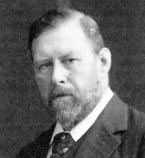|
Vampire literature exists in two forms, as with all literature: fiction and non-fiction. For the most part I will deal with
the fiction part here. The non-fiction will be included into the historical section. Vampire fiction has had its ups and downs
over the last two centuries. It began following the waves of vampire hysteria that swept through Eastern Europe throughout
the mid-18th century. Though the theme was originally only picked up on by a few fringe writers of those areas, soon bigger
names began to explore the vampire idea and it instantly legitimized the genre. For about the next one hundred or so years,
vampire fiction enjoyed great popularity and was culminated by Bram Stoker's Dracula., published in 1897. Then the torch was
taken up by playwrights and vampires were soon seen in operas and plays throughout Europe. In the last century, vampire interest
exploded again in the 50's and 60's with the enormous popularity of Hammer Films and the Dark Shadows television series. This
revived the fiction community and in the 70's Anne Rice and Chelsea Quinn Yarbro revitalized the vampire theme. It is still
going strong today and with more and more writers and directors exploring the darker avenues of the human condition, vampires
are sure to continue to make their presence felt.
Bram Stoker
Not surprisingly the first vampire fiction
to emerge was poetry from Germany. In 1748 Heinrich August Ossenfelder publisher "Der Vampir." For the next several
decades, vampires periodically appeared in other writings, but it wasn't until 1797 and the publication of Johann Wolfgang
von Goethe's poem "Bride of Corinth" that more writers began to explore the vampire as both a literal figure or
in metaphorical sense. Soon other literary giants began to write about vampires.
In England the first
notable piece was Samuel Taylor Coleridge's "Cristabel", written in 1798. He was followed by Robert Southey's "Thalaba".
Other famous English writers to turn their pens to vampires include Rudyard Kipling, John Keats, J Sheridan Le Fanu, Bram
Stoker, Lord Byron, and John Polidori. In France, vampires were not so much the objects of fiction and poetry, but enigmatic
characters in plays and operas, though some poets like Baudelaire and Gautier did write of them. For the most part however,
vampires were more commonly found on stage in plays by Charles Nodier and Alexandre Dumas.
Even in far flung lands
like Russia, where Andrei Turgenev and Alexey Tolstoy wrote of vampires and to the United States where writers like Edgar
Allan Poe used metaphors and had characters who shared many vampiric characteristics.
The vampires enjoyed their
positions as the kings and queens of the night, but their popularity waned following Stoker's Dracula and the decline of the
Romantics. They returned to the realm of pulp fiction and short stories, but never enjoyed the attention of the literary giants
for quite some time. In the 20th century, vampires began to return to popular culture in many ways. They found their way into
the world of comic books and graphic novels, but were banned from the medium in 1954 until the Comics Code was finally revised
in 1971. Since then the vampires popularity has gone up and down in comics, the lone exception is seemingly Vampirella, which
is one of the few vampires to survive the 70's and make it into the 80's. Now with renewed interest in gothic imagery and
stories, more comics are beginning to emerge featuring vampires.
Bram Stoker

The late 70's were the defining time for vampire literature. With the renewed popularity brought to vampires by film and television,
vampire fiction was gaining new readership and more acceptance. Their were four major literary releases between 1975 and 1978
that formed the backbone of modern vampire fiction. In 1975 Fred Saberhagen published "The Dracula Tape", suggesting
that perhaps Dracula was not the cruel tyrant he was so often portrayed as. Then in 1976 a young author named Stephen King
won a literary award for his novel "Salem's Lot", also of note that same year was the publication of "Interview
with the Vampire" by Anne Rice. Finally, in 1978 Chelsea Quinn Yarbro joined these three with "Hotel Transylvania".
Of the four, three continued to develop the characters they created. Saberhagen continued to explore Dracula's good side,
Rice began a moral quest of sorts through Lestat de Lioncourt and Yarbro recounted the unlife and loves of St. Germain.
Throughout the 80's and into the 90's other authors have built upon the foundation that was created by those stories.
Authors like Dan Simmons, Nancy A. Collins, Brian Lumley and Nancy Baker have all contributed mightily to the growth of the
vampire and have ensured its continued immortality. On a personal note, if you know of other authors who write vampire fiction,
let me know and they will be added into the Literature section of this site.
|

